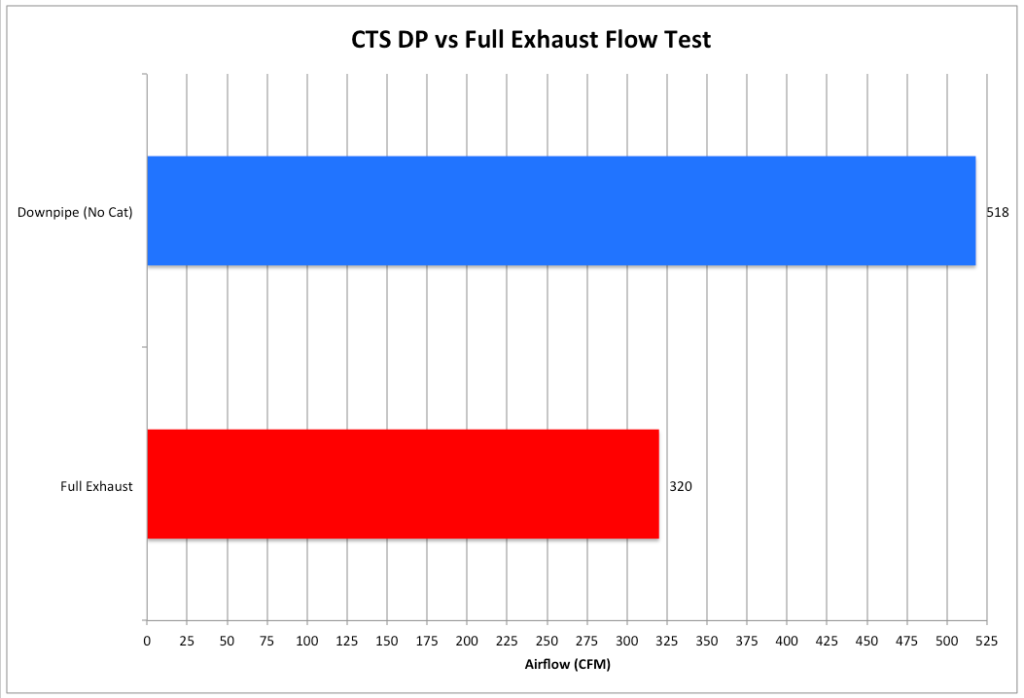Background:
While doing some work on my GTI that involved removing the exhaust I decided to measure how much the entire turboback exhaust setup would flow.
The setup consists of a CTS turbo 3.5″ downpipe with CTS catalytic converter attached to an AWE track exhaust that has been modified with the addition of a Vibrant 17950 resonator and a Magnaflow muffler.
Test Setup:
For this test the exhaust is assembled and attached to the flow bench using an adapter that has the same diameter as the outlet of the IS38 turbine housing.
The bench is operated in exhaust mode, pushing air out the adapter and through the downpipe and then exhaust pipe. The bench is operated at 16″ of H2O.
Note: This test is conducted at 16″ versus 28″ of H2O due to the operating mode of the flow bench. Exhaust mode presents challenges with sealing the interfaces of the parts to air trying to force out from the closed system. This problem is less an issue when operating the flow bench in intake mode since the parts tend to get pulled together when experiencing a vacuum.
Test Results:
The full exhaust setup flows 320 CFM @ 16″ of H2O. This measurement can be extrapolated to 28″ of H2O, which results in a value of 423 CFM. These flow rates are compared on the chart below:
As a variation on the full exhaust test the downpipe was separated and tested alone. The CTS downpipe flows 518 CFM @ 16″ of H2O.
Conclusion:
The full turboback exhaust from my GTI was flow tested and measured 320 CFM @ 16″ of H2O. The CTS downpipe was flow tested separate from the rest of the exhaust and measured 518 CFM @ 16″ of H2O.








Would be cool to see this compared to the flow numbers of a stock catback. Some people say a catback adds zero HP, which I doubt to be the case. Maybe not much, but looking at how small the tubes are inside the stock muffler, there has to be some difference.
Getting my hands on a stock exhaust is the main obstacle to testing one. I’m confident it will flow less than the aftermarket exhaust I tested, hard to guess by how much.